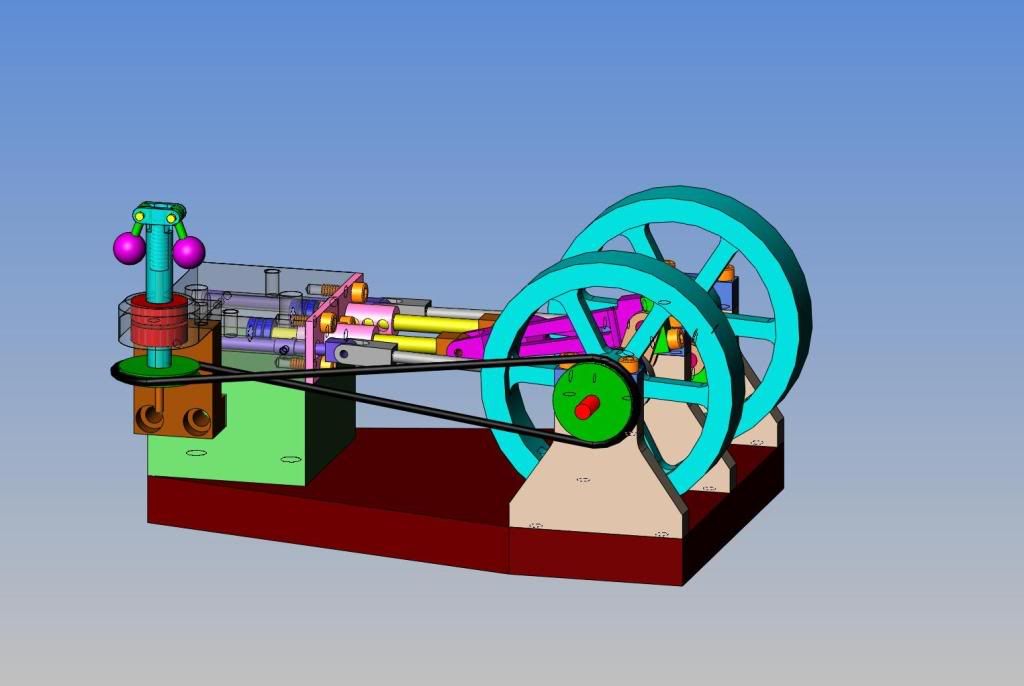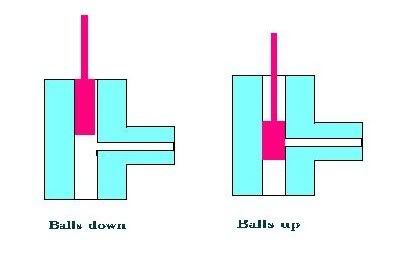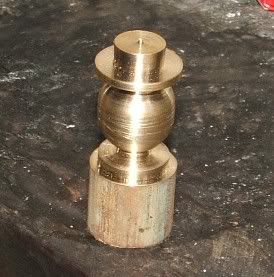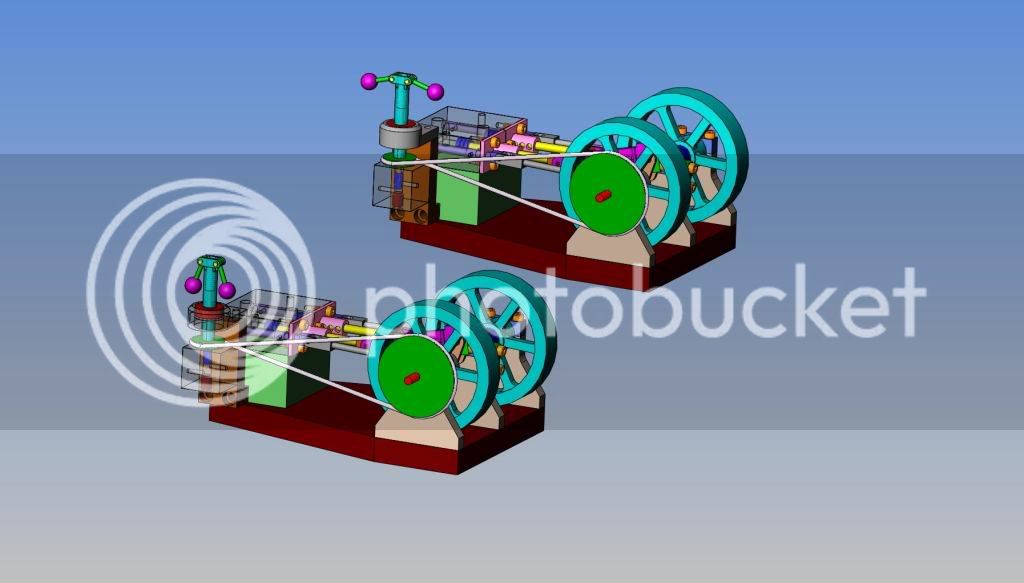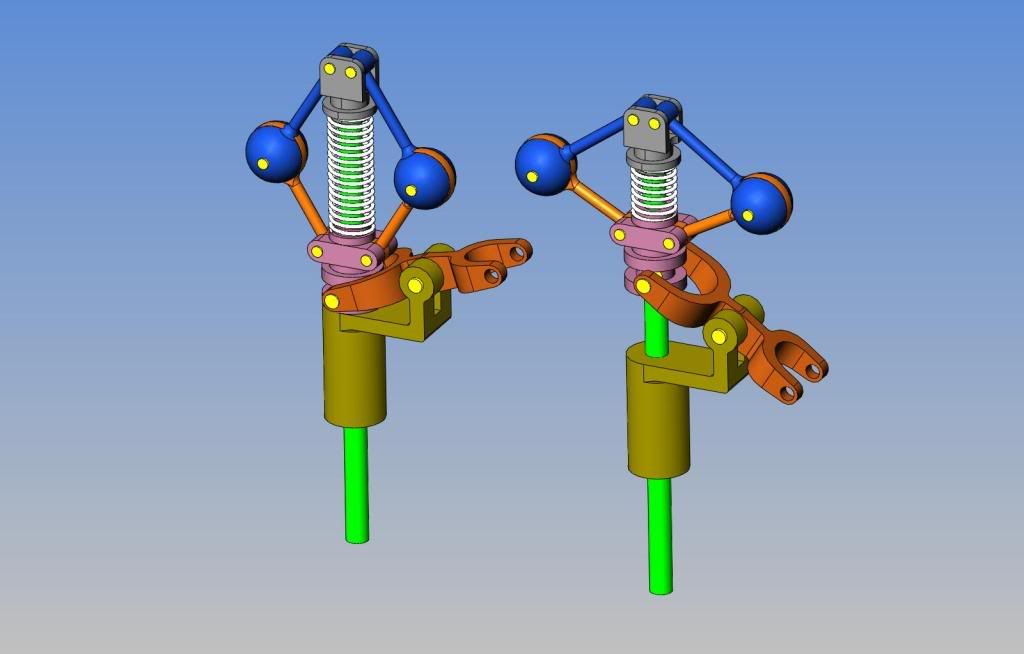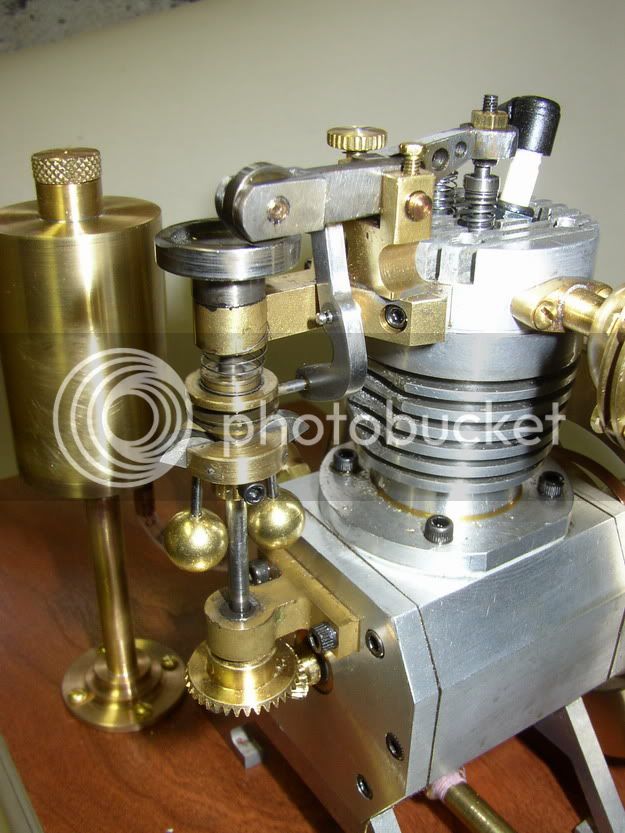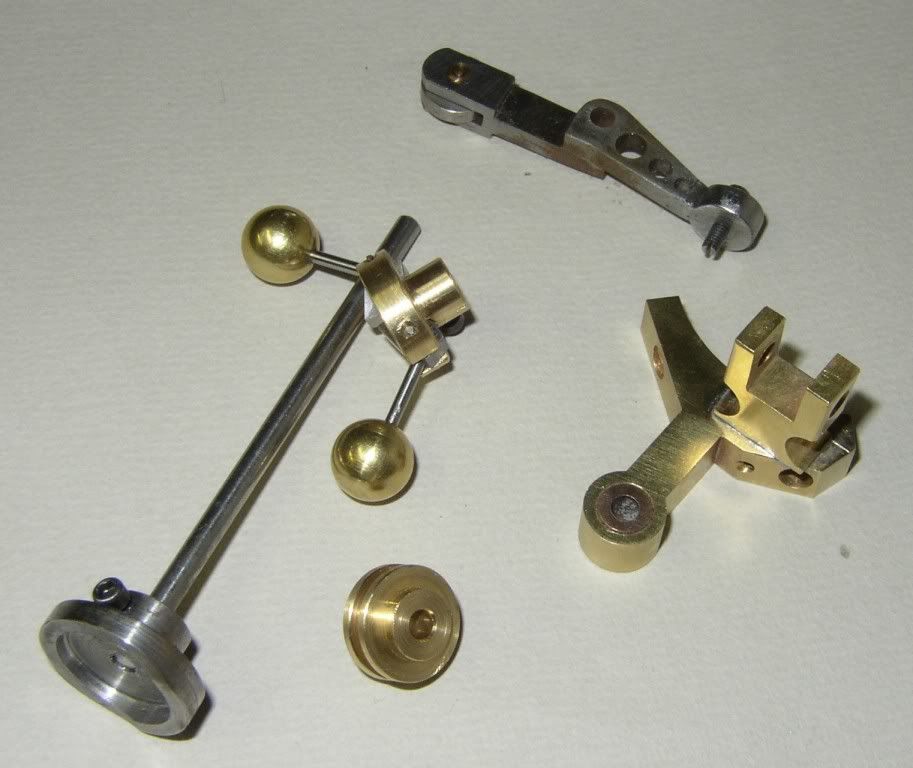Tel---You bring up a very good point. I have nothing to compare this to other than experimenting with the engines I have built in the past year. I know that when I turn my pressure regulater down very low, (6 to 10 PSI) my engines will run very slowly and quietly, but they have very little power and can be "stalled" by finger pressure against the flywheel. If I crank the regulator higher, the engines have proportionally more power, but tend to rev their guts out, to the point where I am afraid they will "throw a rod". Where am I ultimately going with my quest??? Well, I would like to use my horizontal twin engine to run SOMETHING which presents a variable repeating load. When there is low load, I want the engine to run at a fairly constant, "medium" speed. Any load at all will slow these engines down considerably, so I would probably run 30 PSI, but the throttle restrictor valve (part of the governor mechanism) would restrict the FLOW so that the engine wouldn't "run away". In this state, the governor would be "balls out". When the load on the engine begins to increase, the engine will slow down, the balls will begin to take a "balls in" attitude, and this will cause the throttle restrictor mechanism to open, thus supplying a greater flow of air to the engine, thus making it speed up to a point where the balls fly "out" again and restore the speed back to my "medium" speed that I want to achieve as a constant. I layed in bed last night trying to visualize all of the sequences involved here. It seems that when starting one of these engines controlled by a governor, they would immediately rev up untill the balls flew "out" and restricted the flow to keep them from running away. I am doing some preliminary design "imagineering" where the engine belt drives a Geneva mechanism with a fairly massive ratio thru an o-ring drive. When only the constant revolving portion of the Geneva mechanisn was revolving, that would be the "low load" scenario. When the constant revolving portion of the Geneva mechanism engages the star wheel to turn it, I would have a friction brake on the star wheel portion of the Geneva mechanism , and this would be the 'high load" scenario. It would be nice to have a sensitive enough governor that you would be able to see it function and see the effect it has on the engine as it cycles through repeated revolutions of the star wheel.
